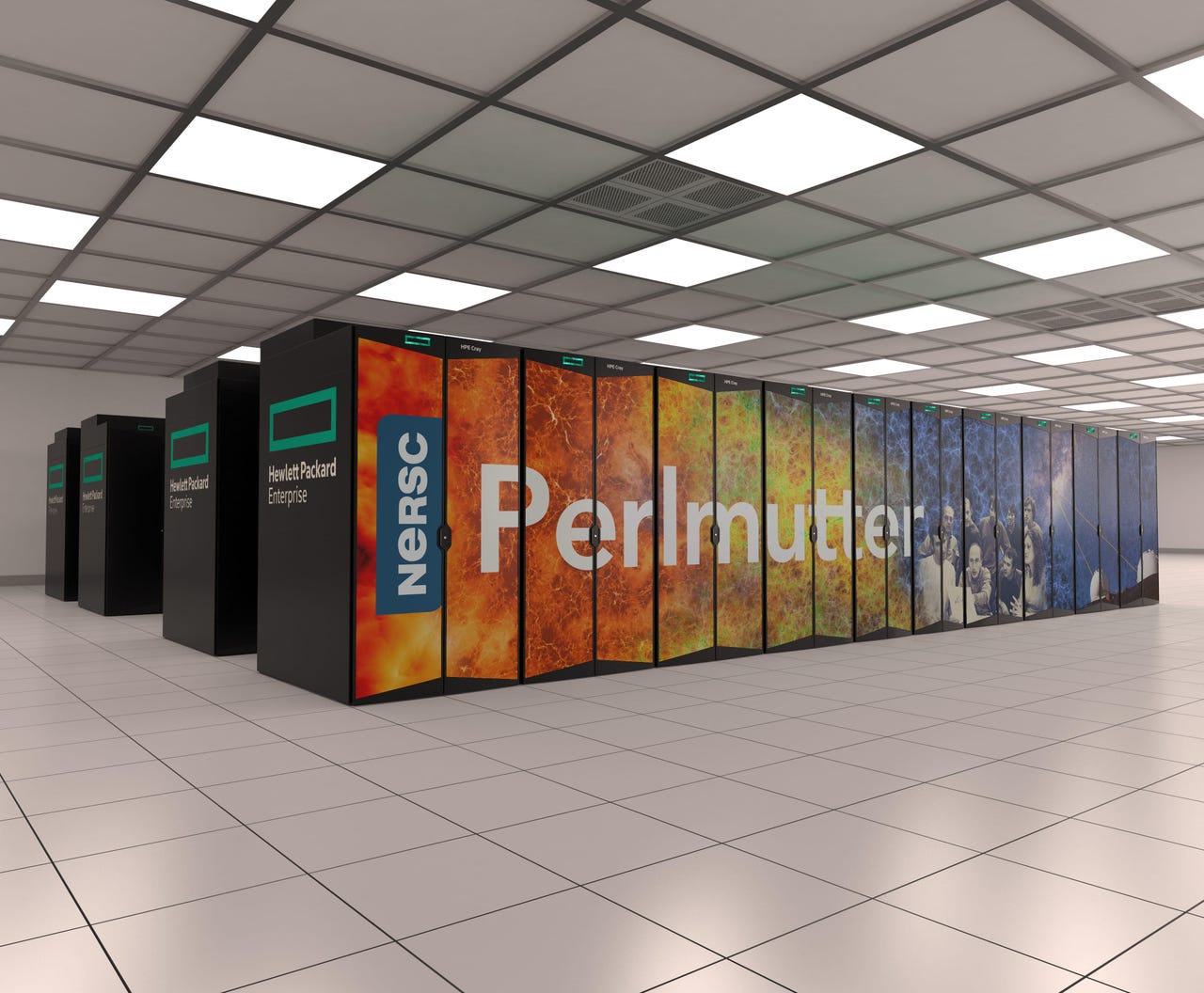US Energy Department launches the Perlmutter AI supercomputer


The US Department of Energy on Thursday is officially dedicating Perlmutter, a next-generation supercomputer that will deliver nearly four exaflops of AI performance. The system, based at the National Energy Research Scientific Computing Center (NERSC) at Lawrence Berkeley National Laboratory, is the world's fastest on the 16-bit and 32-bit mixed-precision math used for AI.
The HPE Cray system is being installed in two phases. Each of Phase 1's GPU-accelerated nodes has four Nvidia A100 Tensor Core GPUs, for a total of 6,159 Nvidia A100 Tensor Core GPUs. Each Phase 1 node also has a single AMD Milan CPU.
More than 7,000 researchers at NERSC will use Permutter to advance science in astrophysics, climate science, microelectronics and more.
"AI for science is a growth area at the U.S. Department of Energy, where proof of concepts are moving into production use cases in areas like particle physics, materials science and bioenergy," Wahid Bhimji, acting lead for NERSC's data and analytics services group, said in a statement. "People are exploring larger and larger neural-network models and there's a demand for access to more powerful resources, so Perlmutter with its A100 GPUs, all-flash file system and streaming data capabilities is well-timed to meet this need for AI."
Among other things, researchers plan to use Perlmutter to help assemble the world's largest 3D map of the visible universe. It will process data from the Dark Energy Spectroscopic Instrument (DESI), a camera that can capture as many as 5,000 galaxies in a single exposure. The DESI map will help shed light on dark energy, the mysterious form of energy that contributes to the expansion of the universe.
The new system was named after Saul Perlmutter, a still-active astrophysicist at Berkeley Lab who helped discover dark energy. Perlmutter is participating in the system's official launch via a virtual celebration, releasing the first set of official jobs on the new supercomputer.